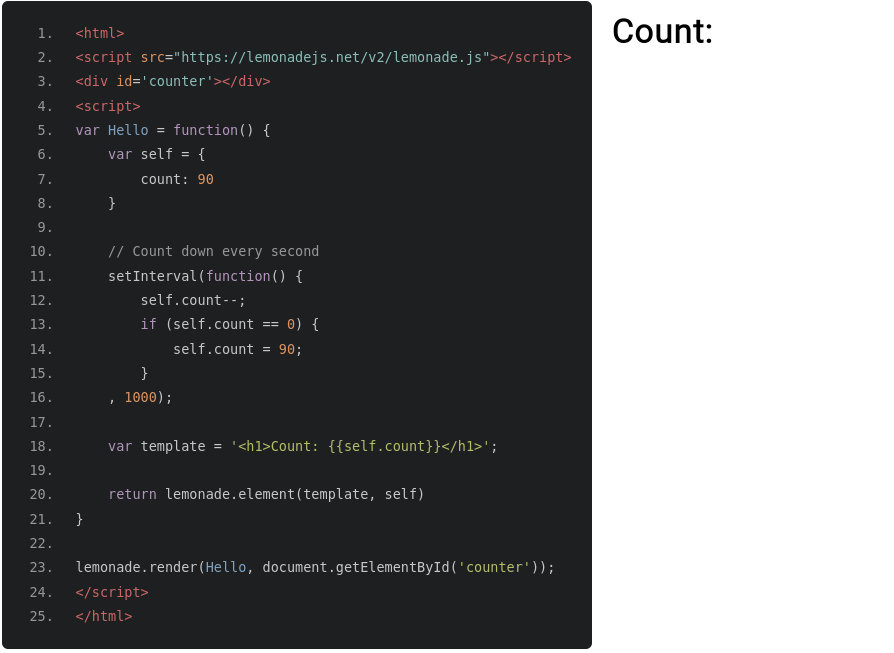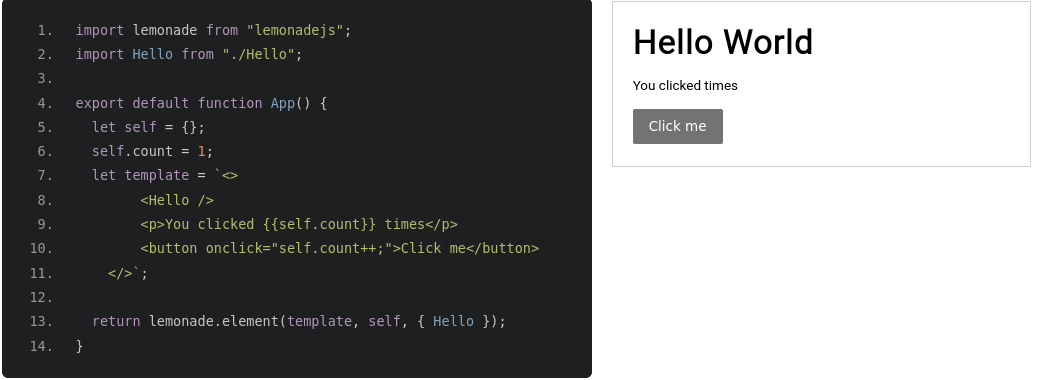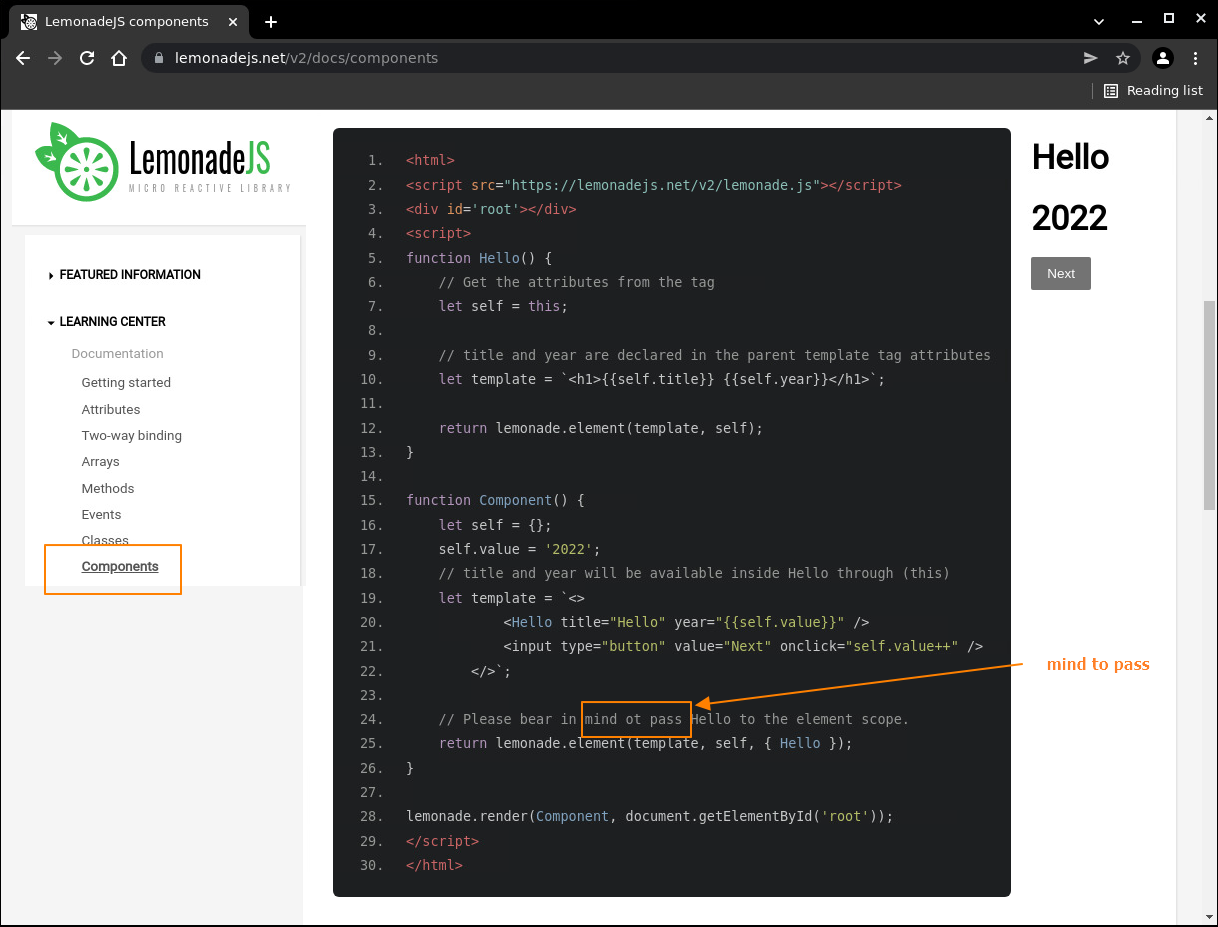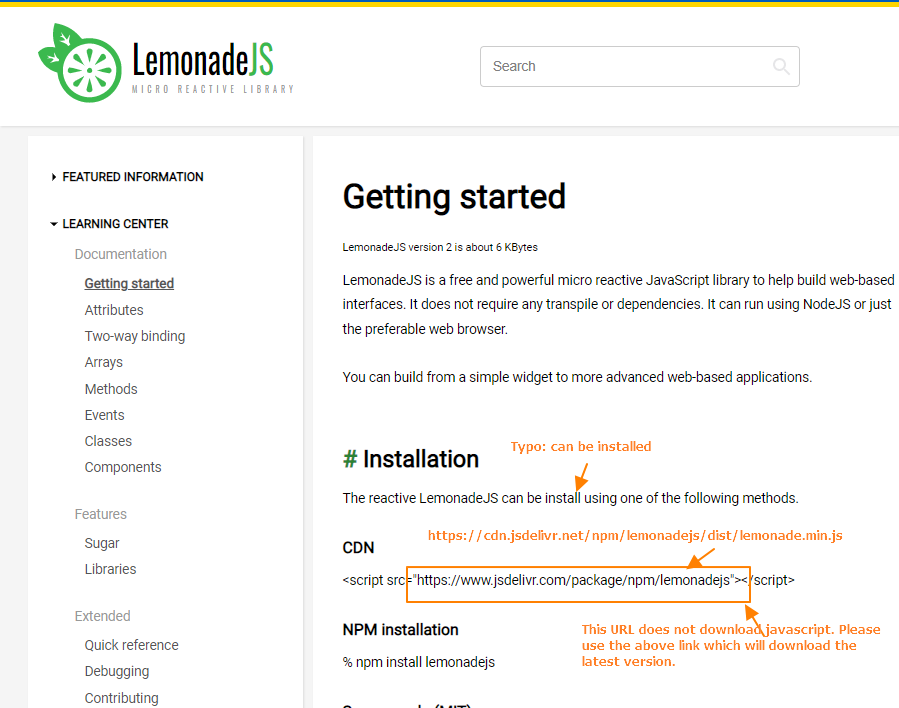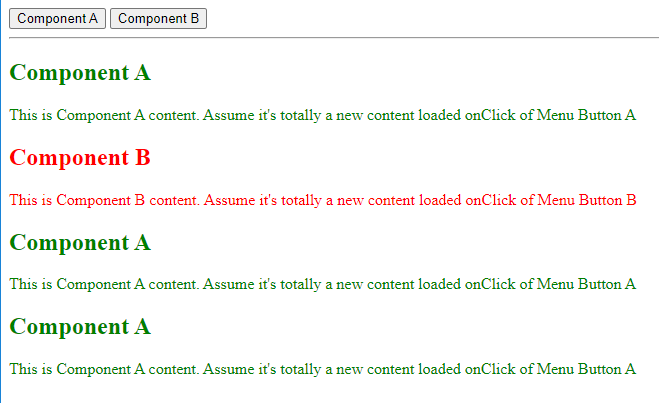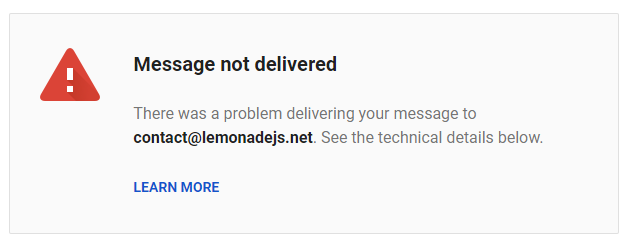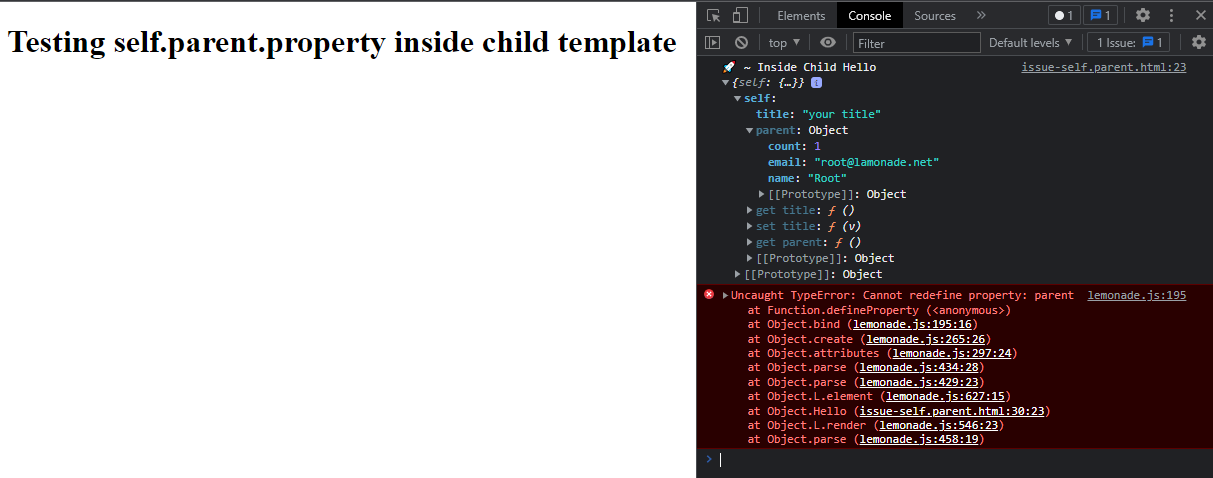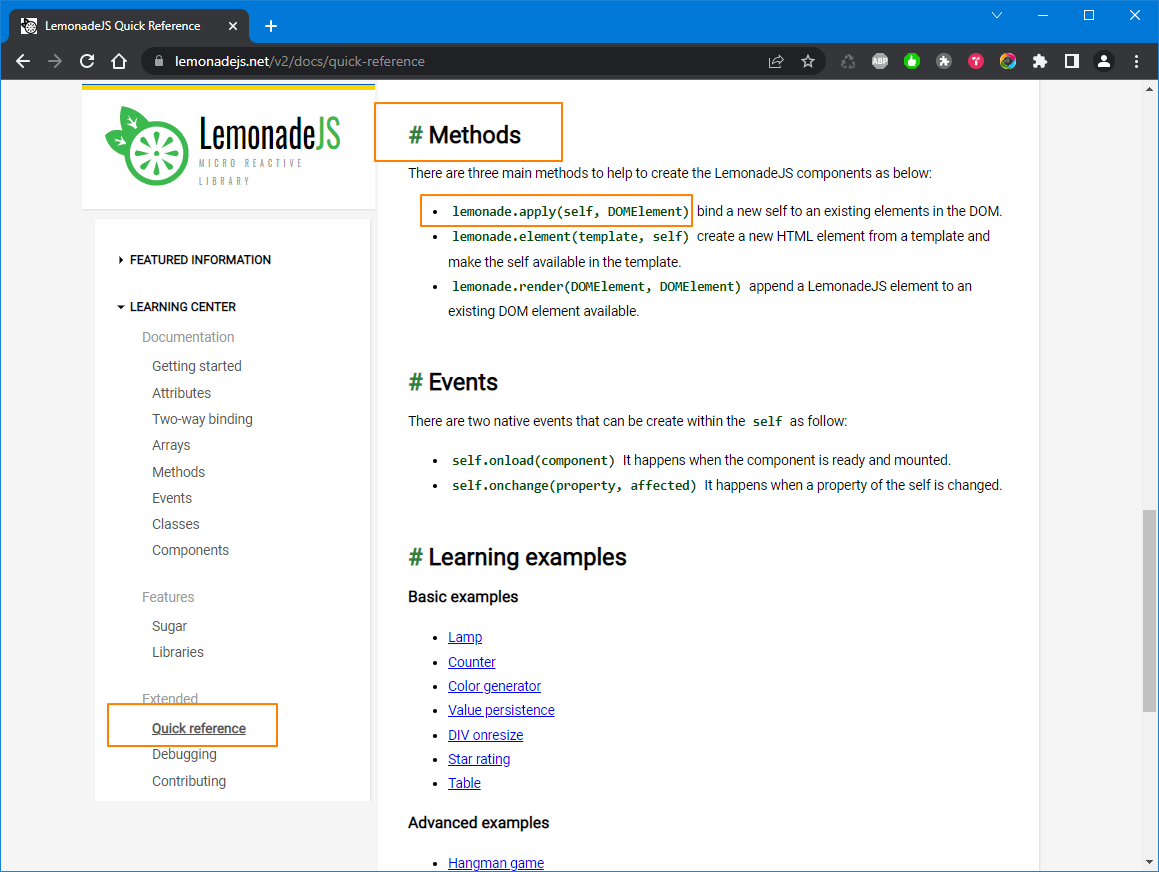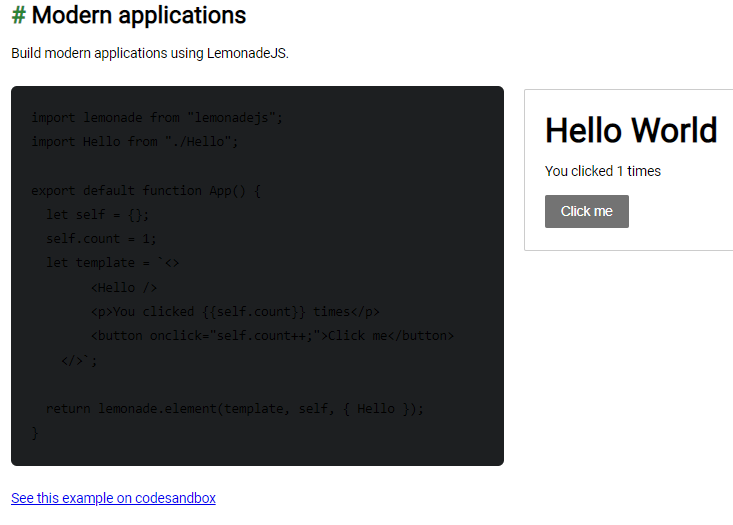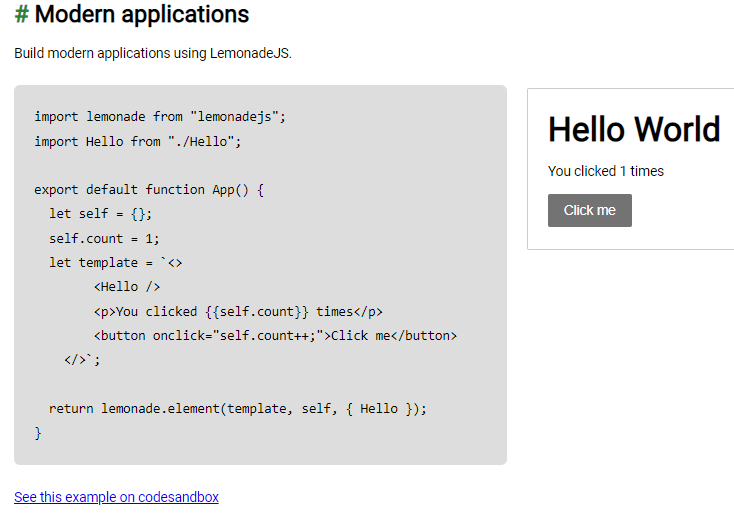LemonadeJS is a super lightweight reactive vanilla javascript micro-library (7 KBytes). It helps to integrate the JavaScript (controllers) and the HTML (view). It supports two-way data binding and integrates natively with jSuites to help to create amazing interfaces quicker.
It would help you deliver reusable components and does not require transpiler, babel, or hundreds of other dependencies. It works just fine in any javascript dev environment. LemonadeJS has a quick learning curve, keeps coding fun, and is very close to native JS.
- Make rich and user-friendly web interfaces and applications
- Handle complicated data inputs with ease and convenience
- Improve the software user experience
- Create rich CRUDS and beautiful UI
- Highly flexible and customizable
- Lightweight and simple to use
% npm install lemonadejs<script src="https://cdn.jsdelivr.net/npm/lemonadejs/dist/lemonade.min.js"></script>% npx @lemonadejs/create myApp<br>
% cd myApp<br>
% npm run start<br>
% npm run test
Build modern applications with lemonadeJS and node.
See this example on codesandbox
import lemonade from "lemonadejs";
import Hello from "./Hello";
export default function App() {
let self = this;
self.count = 1;
return `<div>
<div><Hello /></div>
<p>You clicked {{self.count}} times</p>
<button onclick="self.count++;">Click me</button>
</div>`;
}Simplicity to run in the browser without dependencies, servers, transpiler.
<html>
<body>
<div id="root"></div>
<script src="https://cdn.jsdelivr.net/npm/lemonadejs/dist/lemonade.min.js"></script>
<script>
function Hello() {
let self = this;
return `<h1>{{self.title}}</h1>`;
}
function App() {
let self = this;
self.count = 1;
return `<>
<Hello title="your title" />
<p>You clicked {{self.count}} times</p>
<button onclick="self.count++;">Click me</button>
</>`;
}
lemonade.render(App, document.getElementById('root'));
</script>
</body>
</html>import lemonade from "lemonadejs";
export default function Component() {
let self = this;
self.rows = [
{ title:'Google', description: 'The alpha search engine...' },
{ title:'Bing', description: 'The microsoft search engine...' },
{ title:'Duckduckgo', description: 'Privacy in the first place...' },
];
// Custom components such as List should always be unique inside a real tag.
return `<table cellpadding="6">
<thead><tr><th>Title</th><th>Description</th></th></thead>
<tbody @loop="self.rows">
<tr><td>{{self.title}}</td><td>{{self.description}}</td></tr>
</tbody>
</table>`;
}<html>
<body>
<div id='root'></div>
<script src="https://cdn.jsdelivr.net/npm/lemonadejs/dist/lemonade.min.js"></script>
<script>
function Component() {
// Create the self object
let self = this;
self.test = function(e) {
console.log(e);
e.preventDefault();
}
// The property call is added to the observable list when added to the DOM
return `<input type="button" value="Click test" onclick="self.test(e);"/>`;
}
// Render the LemonadeJS element into the DOM
lemonade.render(Component, document.getElementById('root'));
</script>
</body>
</html><html>
<body>
<div id='root'></div>
<script src="https://cdn.jsdelivr.net/npm/lemonadejs/dist/lemonade.min.js"></script>
<script>
function App() {
let self = this;
self.disabled = false;
return `<>
<button onclick="self.disabled = !self.disabled">Toggle</button>
<input type="text" disabled="{{self.disabled}}" />
</>`;
}
lemonade.render(App, document.getElementById('root'));
</script>
</body>
</html><hello-element title="Hello world" />class HelloElement extends HTMLElement {
constructor() {
super();
}
render() {
let self = this;
return `<>
<h1>{{self.title}}</h1>
<input type="button" value="setTitle()"
onclick="self.title = 'Test'" />
</>`;
}
connectedCallback() {
if (! this.el) {
lemonade.render(this.render, this, this);
}
}
}
window.customElements.define('hello-element', HelloElement);This software is free to use, and it is distributed under the MIT license.
- Getting started
- Attributes
- Two-way binding
- Arrays
- Methods
- Events
- Components
- Classes
- Web components
- Quick reference
- Debugging
- Contributing
- JavaScript List
- JavaScript Rating
- JavaScript Router
- JavaScript Signature
- JavaScript Data grid
- JavaScript Image Cropper
- JavaScript Modal
- JavaScript Tabs
- JavaScript Calendar
- JavaScript Color picker


